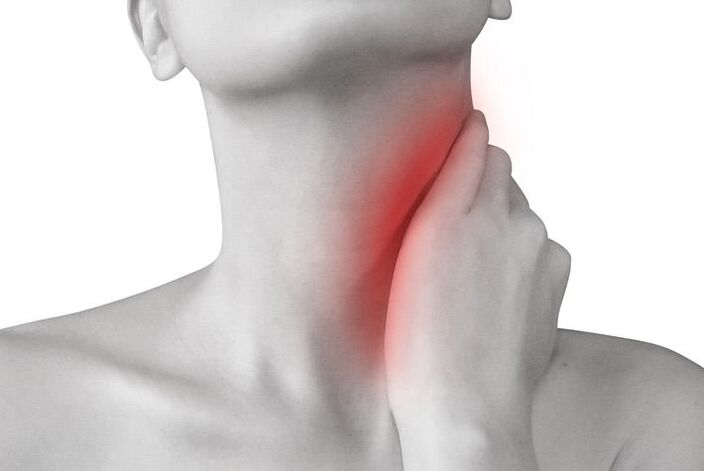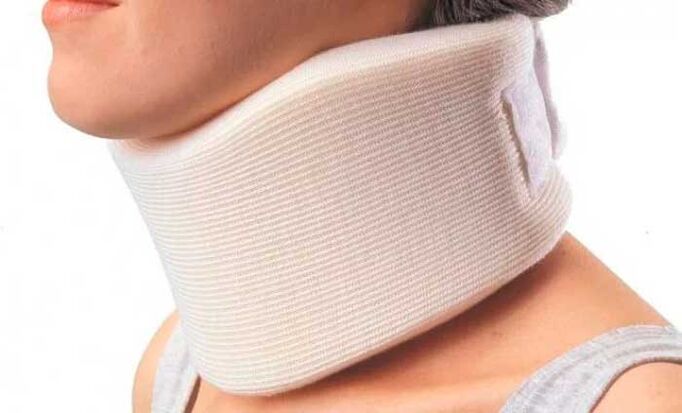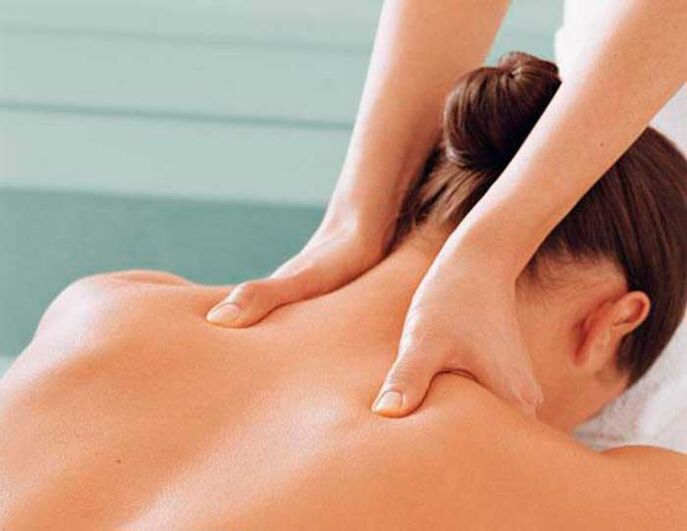
The neck is considered the vital part of the human body. The main blood arteries, veins, capillaries and nerve fibers pass through it, forcing the whole body to function fully. Blood channels supply the brain with nutrients and oxygen, without which the most important organ of the nervous system cannot function normally. If a person has a sore neck, you need to find out what causes the disorder and, if possible, eliminate them.
Types of neck pain
Pain syndrome is divided into two main groups:
- Neck pain (lumbago) - steadily, with varying strength and dynamics, spreads to the shoulders and beyond. He often has a pulling and painful character. The cause is a painful spasm of the neck muscles.
- Cervicago is a sharp pain that occurs unexpectedly during unexpected sharp turns of the head, long stay in an uncomfortable position. At the same time, a person is not able to freely turn his neck, due to severe pain. "Pulls" on the shoulders, chest, hands. This pain is associated with the effect of stimuli on nerve endings that pass near the brain.
Causes of the disorder
Often patients have neck pain. Sometimes spasms are given to the back due to involuntary movements of the head. Sometimes there is discomfort in the occipital region. It is especially unpleasant when the pain syndrome manifests itself in the morning due to uncomfortable posture while sleeping.
With the confluence of adverse circumstances, pain can arise due to the consequences of untreated infectious diseases. They are so unbearable that it is not possible to think about the reason for their appearance.
Neck pain occurs for a variety of reasons:
- Not specific.
- Vertebrogenic.
- In case of dysfunction of internal organs.
- With the development of oncological formations of a benign and malignant nature.
- In case of injury.
- With inflammation of bone tissue (subacute osteomyelitis, purulent lymphadenitis, spinal palsy, meningitis, exacerbated thyroiditis).
Non-specific reasons

Patients often have to experience non-specific pain. They occur in response to an overstrain of the cervical muscles and are considered a natural reaction of the body. Usually, this feeling appears when a person has been lying in an uncomfortable position for a long time or is physically overworked.
Neck pain caused by serious loads of a dynamic nature. In order to get rid of the unpleasant sensations, the body must have a good rest. This pain is not too intense, does not last long and goes away on its own without requiring any special treatment.
When the overload is persistent, physiological pain takes a chronic form - a degenerative-dystrophic process begins. Harmful factors should be eliminated immediately when alarming symptoms appear, and not wait for the development of the disease.
The statistical cause of pain can be:
- Bad posture during sleep.
- Frequent movements of the head.
- Very firm cushion.
Vertebral causes

Dysfunction of the cervical vertebrae, discs, the joints that connect them, ligaments and muscles is the answer to the question of why the neck hurts. When the pain syndrome is constantly observed, degenerative-dystrophic diseases of the spine are recorded in such patients during an X-ray examination. The neck is susceptible to this disease due to its anatomical structure:
- The neck joints are extremely mobile.
- The vertebrae have a very fragile structure and are small in size.
- They carry huge loads every second, supporting the skull.
- Neurovascular fibers are located inside the vertebrae.
Degenerative-dystrophic pathologies include:
- Osteochondrosis.
- Kyphosis.
- Spondylolisthesis (list).
- Lordosis.
- Spondylopathy.
- Spinal stenosis.
- Intervertebral hernia. With it the neck hurts, mainly on one side.
With such disorders, complications can arise in the form of torticollis, protrusion of the disc, compression of the tissues of the spinal cord, progression of sciatica, deformity of the spine, persistent headaches, dizziness and dizziness. ear noise.
Internal issues

Neck pain that occurs in the front is associated with dysfunction of the thyroid gland. They usually manifest as inflammatory lesions of the gland (thyroiditis), are acute, subacute, chronic or autoimmune in nature. The disorder is indicated by:
- Increase in body temperature.
- Lethargy, drowsiness.
- Redness, possibly swelling of the skin on the front of the neck.
- Choking, difficulty swallowing.
Thyroiditis causes systematic stabbing pains. It grows by swallowing, turning its head, probing the gland.
Unexpected neck pain on the side signals inflammation of the lymph nodes in diseases of ENT organs. Provocateurs of this condition can be:
- ENT diseases of a different nature (pharyngitis, laryngitis, sinusitis, otitis media).
- Cavities.
- Periodontitis.
- Retropharyngeal abscess.
- Diseases of an infectious nature.
The neck may swell noticeably, losing its shape. The temperature rises rapidly, symptoms of the development of the underlying disease are noted.
Development of oncological neoplasms

Neck pain causes cancer of the spinal tissues, blood vessels, and internal organs in the neck. Tumors of the spine can be:
- Primary (mesenchymal chondrosarcoma, osbolithosarcoma, lymphangioma).
- Secondary (myeloma, lymphogranulomotosis).
Sometimes the causes of neck pain lie in tumors of the spinal cord and nerve fibers.
Neck injury

The spine in the neck area is rather fragile and vulnerable, which means that it is prone to injuries of varying severity, such as:
- Fractures, bumps, bruises.
- Dislocations, subluxations.
- Sprains, tears of ligaments and muscles.
- Tear of fragment of intervertebral disc.
- Extensive bruising, bruising.
- Compression of spinal cord tissue.
Neck injuries are extremely dangerous. This area contains important centers that allow the spinal cord to function. Affection of the brain at the level of 1 and 2 segments of the cervical vertebrae results in instantaneous death. Injuries to the lower segments can prevent a person from feeling their body below the neck and moving. Trauma to the 7th and 8th vertebrae affects the lower limbs.
Inflammation of the bones
The cervical spine can become inflamed. They are often of the nature of systemic connective tissue diseases:
- Liman-Sachs disease.
- Rheumatoid arthritis.
- Knotty periarteritis.
- Wagner's disease.
- MCTD (Sharpe syndrome).
- Progressive systemic sclerosis.
- Vasculitis.
- Ankylosing spondylitis
When a patient's neck hurts, the causes are often associated with ankylosing spondylitis (ankylosing spondylitis). In this case, the vertebral joints become inflamed, deformed, and complete immobility of the cervical vertebrae occurs.
Neck pain in a child

In children, unlike adults, neck pain is not hidden in the defeat of tissues and vertebral structures, but in:
- Lymphadenopathy.
- Bone tuberculosis.
- Zaushnitsa (pig).
- Meningitis.
- Tetanus.
- Pneumonia.
- Retropharyngeal abscess.
- Rheumatic diseases (polyarthritis, oligoarthritis).
When a child experiences neck pain and discomfort, it cannot be ignored. Consultation with a pediatrician is necessary, as the causes of this condition can be extremely serious.
Therapies and diagnostics

You can completely free yourself from pain by identifying its root cause. You can relieve symptomatic painful sensations with the following medicines:
- Analgesics and nonsteroidal anti-inflammatory drugs.
- Muscle relaxants that relieve muscle tone and spasms.
- Glucocorticoid hormonal agents. They are used to enhance the effect of pain relievers.
- Chondroprotectors have long been used to restore cartilage tissue and stop the process of its decomposition.
- Decongestants, anticonvulsants, antidepressants, vitamin therapy to eliminate chronic pain.
An experienced professional should be involved in the treatment of the disease. You need to see a therapist first. He will assess, according to the complaints, the general condition of the patient, tell you why the neck hurts, how to treat the pathology, what irritating factors should be avoided.
Depending on the causes of the disease, the therapist will recommend consulting such narrow specialists:
- Rheumatologist.
- Orthopedist.
- Traumatologist.
- Neurologist.
- Masseur, chiropractor.
- Physiotherapist.
For neck pain, such research methods are prescribed as:
- General blood test.
- Determination of ESR.
- Review of rheumatoid factors.
- X-ray of the spine.
- CT and MRI (Magnetic and Computed Resonance Imaging) of the spine.
When an adult or child develops neck pain, it could be a sign of osteochondrosis, meningitis, a result of stress, or a side effect of taking certain medications. Doctors need to determine exactly why their patient has persistent neck pain.
If after the examination it is revealed that the inflammation of the lymph nodes has become the main cause of pain in the neck, they are prescribed:
- UHF.
- Massage of the back and the base of the skull.
- Catch-up gymnastics.
- Medications.
You cannot ignore the disease. In the later stages of its development, surgery will be required to open the lymph nodes and clean them of accumulated pus.
Non-drug therapy

Complex therapy strengthens the cervical muscles, helps to eliminate spasms, makes them flexible and elastic, improves blood circulation, restores maneuverability of the neck vertebrae, prevents exacerbation and development of the disease. To do this, use:
- Physiotherapy.
- Acupressure.
- Manual therapy.
- Physiotherapy.
- Wear splint collars.
- Spa treatment.
- Acupuncture.
- Traction of the spine.
In the acute period, physical therapy, massage, gymnastics are not used until the pain has stopped. Modern methods of physiotherapy allow you to achieve a satisfactory result without strong drugs and surgical intervention. This:
- Hilamat material system (Elgos).
- Laser therapy.
- Electrophoresis.
Doctors advise patients what to do when their neck hurts. Necessary:
- Sit up straight, don't bend down when reading, writing, eating.
- The work chair must have an ergonomic backrest.
- Watch your posture when you walk.
- Sleep on a small orthopedic pillow.
- Rub the neck with prescribed ointments or gels with analgesic effect three times a day.
- Do a self-massage to eliminate the pain.
For sharp or aching neck pain, you should not:
- Abruptly throw your head back.
- Turn to the affected side frequently.
- Work, read, write continuously in a bent position.
- Abuse of wearing a splint collar.
- Sleep on a large, tall pillow.
What to do if you blow your neck

Severe pain in the neck, accompanied by muscle inflammation, occurs with prolonged exposure to cold drafts. People sometimes complain about having their necks blown off. Doctors call this condition myositis. At the same time, the patient cannot calmly turn around, bow, throw his head back, his neck hurts a lot.
A doctor will help you get rid of the disease quickly and effectively. Before going to his office, there are some things you can do to relieve the discomfort and pain:
- The painful area should be lubricated with a warming ointment (usually these ointments smell bad and cause a burning sensation on the skin).
- Massage the neck with gentle, light movements.
- Apply dry heat to the inflamed area (wrap yourself in a woolen scarf, tie a terry towel).
- Try not to make any sudden movements.
Do not take pain relievers without consulting a doctor. Only a doctor can prescribe them and determine the dosage.
Treatment of osteochondrosis of the neck
Neck problems with osteochondrosis are more common than with the lower back. Often the lower segments of the vertebrae are affected - 5-6 or 6-7. The pain manifests itself in the back, pulls in the neck on the left, it is especially felt intensely during an exacerbation.
Osteochondrosis is a chronic disease, manifested by periodic exacerbation, which can have vague symptoms for a long time. For treatment, the patient is prescribed:
- Physiotherapy (hydrotherapy is particularly effective for this disease).
- Analgesics.
- Take nonsteroidal anti-inflammatory drugs. It is recommended to drink them within 3 weeks. Then the patient's condition is assessed and a decision is made on the further use of drugs in this group.
- Special remedial gymnastics.
- Manual therapy.
- In addition to conservative medicine, treatments with folk remedies are welcome: lotions, compresses, decoctions, infusions, ointments and homemade creams.
If it was possible to get rid of osteochondrosis in the early stages, then prevention should not be forgotten in order to prevent the re-development of the disease.
Folk recipes

Neck pain can be eliminated with the help of folk recipes:
- The infusion of a series perfectly relieves inflammation. For the drug, 1 tbsp is required. the. dry raw materials, filled with a glass of boiling water. After 3-4 hours of infusion and filtration, the drug can be drunk half a glass before meals.
- An effective ointment is made from a mixture of St. John's Wort, pine buds, eucalyptus leaves, mint and snake root. All components are ground into powder. Then 100 ml of boiling water is poured and boiled for 4-5 minutes. 75 g of melted butter (vegetable or butter can be used) are gradually added to the broth. The ointment is applied after hardening. Store it in the refrigerator.
- In the same way, you can prepare ointments with plantain, hops, burdock, lavender, marshmallow, dandelion, yarrow.
- An excellent healing composition is possessed by an ointment based on dandelion root, birch buds, sown coriander fruits.
Surgical treatment is used in emergencies and for strict indications - if complications from spinal diseases develop, the patient suffers from severe chronic pain, which cannot be eliminated by conservative therapy for six months. Surgery to relieve neck pain comes with huge risks. Therefore, to begin with, all available treatment methods should be used to combat the disease.






















